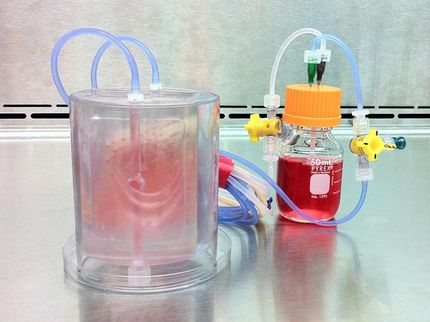3-D printed ovaries produce healthy offspring
Advertisement
Used 3-D printing to create bioprosthetic mouse ovary to restore fertility, boost hormone production Targeted to women who survived childhood cancer, have had treatments that affect hormones and fertility "The holy grail of bioengineering for regenerative medicine"
CHICAGO --- The brave new world of 3-D printed organs now includes implanted ovary structures that, true to their design, actually ovulate, according to a study by Northwestern University Feinberg School of Medicine and McCormick School of Engineering.
By removing a female mouse's ovary and replacing it with a bioprosthetic ovary, the mouse was able to not only ovulate but also give birth to healthy pups. The moms were even able to nurse their young.
The bioprosthetic ovaries are constructed of 3-D printed scaffolds that house immature eggs, and have been successful in boosting hormone production and restoring fertility in mice, which was the ultimate goal of the research.
"This research shows these bioprosthetic ovaries have long-term, durable function," said Teresa K. Woodruff, a reproductive scientist and director of the Women's Health Research Institute at Feinberg. "Using bioengineering, instead of transplanting from a cadaver, to create organ structures that function and restore the health of that tissue for that person, is the holy grail of bioengineering for regenerative medicine."
How is this research different from other 3-D printed structures?
What sets this research apart from other labs is the architecture of the scaffold and the material, or "ink," the scientists are using, said Ramille Shah, assistant professor of materials science and engineering at McCormick and of surgery at Feinberg.
That material is gelatin, which is a biological hydrogel made from broken-down collagen that is safe to use in humans. The scientists knew that whatever scaffold they created needed to be made of organic materials that were rigid enough to be handled during surgery and porous enough to naturally interact with the mouse's body tissues.
"Most hydrogels are very weak, since they're made up of mostly water, and will often collapse on themselves," Shah said. "But we found a gelatin temperature that allows it to be self-supporting, not collapse, and lead to building multiple layers. No one else has been able to print gelatin with such well-defined and self-supported geometry."
That geometry directly links to whether or not the ovarian follicles, organized hormone-producing support cells surrounding an immature egg cell, will survive in the ovary, which was one of the bigger findings in the study.
"This is the first study that demonstrates that scaffold architecture makes a difference in follicle survival," Shah said. "We wouldn't be able to do that if we didn't use a 3-D printer platform."
How does this impact humans?
The scientists' sole objective for developing the bioprosthetic ovaries was to help restore fertility and hormone production in women who have undergone adult cancer treatments or those who survived childhood cancer and now have increased risks of infertility and hormone-based developmental issues.
"What happens with some of our cancer patients is that their ovaries don't function at a high enough level and they need to use hormone replacement therapies in order to trigger puberty," said Monica Laronda, co-lead author of this research and a former post-doctoral fellow in the Woodruff lab. "The purpose of this scaffold is to recapitulate how an ovary would function. We're thinking big picture, meaning every stage of the girl's life, so puberty through adulthood to a natural menopause."
Laronda is now an assistant professor at the Stanley Manne Children's Research Institute at the Ann & Robert H. Lurie Children's Hospital.
Additionally, the successful creation of 3-D printed implants to replace complex soft tissue could significantly impact future work in soft tissue regenerative medicine.




























































